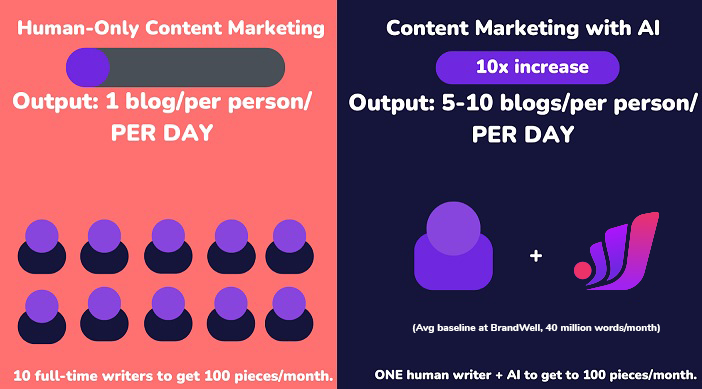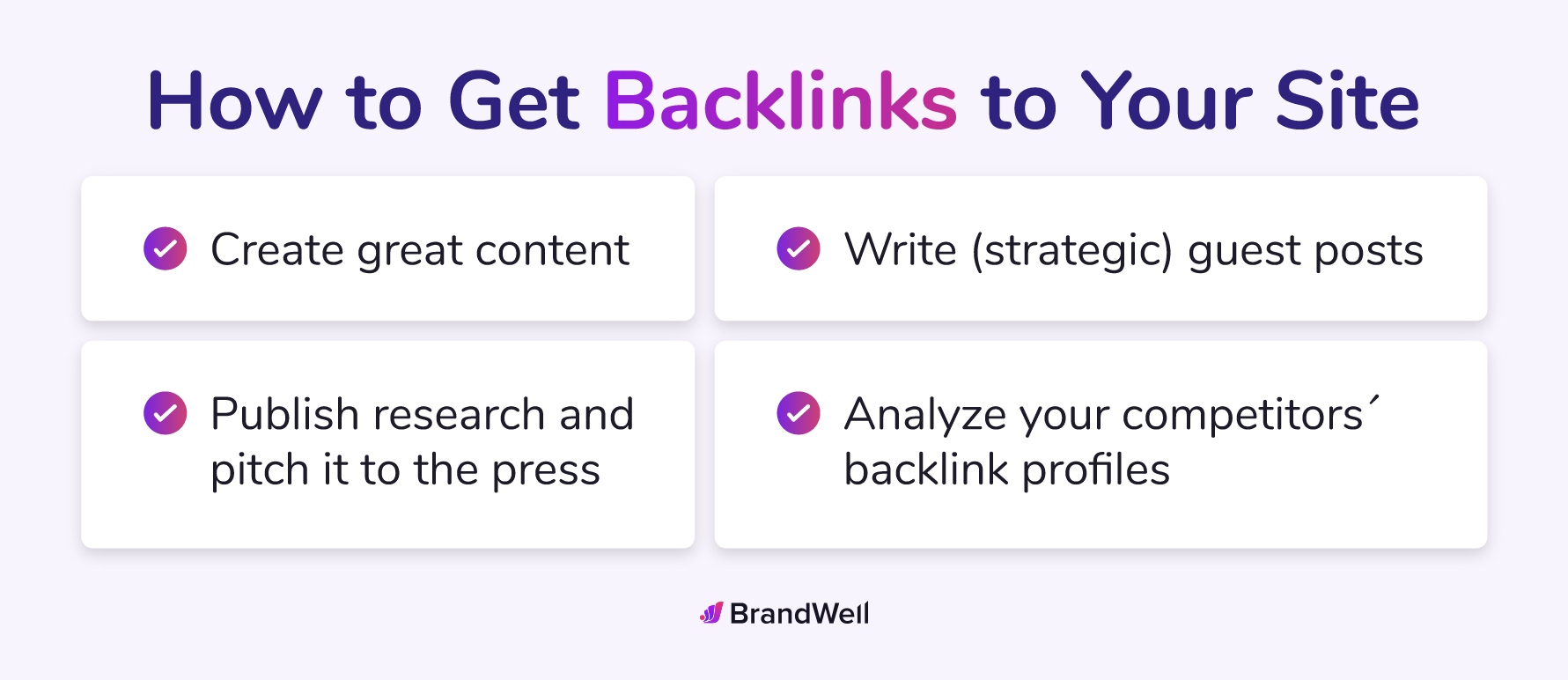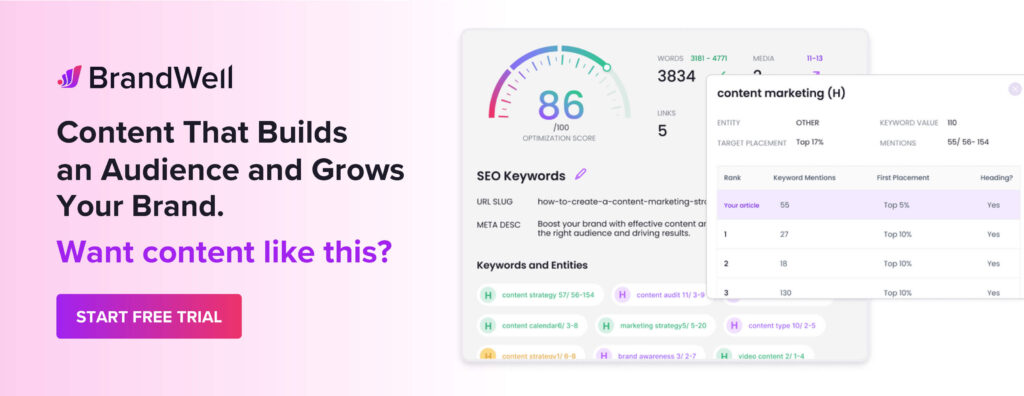Discover top guides, trends, tips and expertise from AIO Writers
What to Do After Keyword Research: 12 Steps to SEO Success
Julia McCoy
Thursday, 6th Jun 2024
So you’ve got this treasure trove of keyword insights. Do you know what to do after keyword research? How do you turn these phrases and terms into a powerhouse content strategy?
Let me show you the next steps to SEO success.
Table Of Contents:
- What to Do After Keyword Research
- Step 1: Dive Into Search Intent
- Step 2: Develop a Content Strategy
- Step 3: Create Buyer Persons
- Step 4: Choose the Right Content Types
- Step 5: Optimize Existing Content
- Step 6: Create a Content Calendar
- Step 7: Create Stellar Content
- Step 8: Optimize Your Content for Search Engines
- Step 9: Improve User Experience
- Step 10: Build High-Quality Backlinks
- Step 11: Analyze and Refine Your SEO Strategy
- Step 12: Promote Your Content
- FAQs: What to Do After Keyword Research
- Conclusion
What to Do After Keyword Research
Whether you ran a keyword generator or manually searched for these phrases yourself, your keyword list serves as the backbone of your SEO strategy. What you do next will be crucial in turning those keywords into money-making content.
Here’s a detailed guide on what to do next.
Step 1: Dive Into Search Intent
Ever wondered what’s really behind those search terms? What are they hoping to find?
Are they searching for answers, or just trying to stay informed? Are they looking for answers, shopping for a product, or trying to find a specific webpage?
When you understand their search intent, you can create content that answers their questions and meets their needs.
Step 2: Develop a Content Strategy
With your audience’s needs in mind, it’s time to craft a content strategy that resonates.
Start by identifying the main topics and subtopics that matter most, and then decide which content types will best engage your audience.
Categorize related keywords by theme and then prioritize them based on search volume, competition level, and relevance to your business.
Writing a blog post, shooting a video, designing an infographic, or creating a mix of formats requires a clear direction. Without a well-defined content strategy, your efforts may lack focus and lose steam.
Step 3: Create Buyer Persons
Know your audience, inside and out. Uncover their motivations, frustrations, and desires.
Create buyer personas that capture the essence of your ideal customer.
This critical step helps you identify their pain points and desires, enabling you to craft content that resonates on a deeper level and drives real results.
Step 4: Choose the Right Content Types
When crafting content, consider the audience you’re trying to reach. Blog posts, ultimate guides, case studies, ebooks, webinars, and podcasts serve distinct purposes and appeal to diverse groups.
Choose the right mix to engage your target customers and provide them with the valuable information they crave.
Think beyond the written word. Experiment with multimedia content such as videos, infographics, and interactive content to reach a wider audience.
Step 5: Optimize Existing Content
Take a step back and review your existing content. Look for opportunities to optimize your pages and posts. Use tools like Google Search Console to analyze how your existing content ranks, and pinpoint areas that need a boost.
Transform stale content into rich resources by infusing fresh information and incorporating new keywords. This expert-level refresh can bring your pages back to the top of search engine rankings, drawing in a targeted audience.
Step 6: Create a Content Calendar
Before you start creating new content, plan your topics, formats, and publishing schedule on a content calendar. This way you’ll be able to stay focused and organized.
When planning your content calendar, factor in crucial dates, events, and seasonal patterns. The ultimate goal is to generate content that not only informs but also resonates with your audience no matter where they are and at what time of year.
Step 7: Create Stellar Content
With a content schedule in place, it’s time to decide whether to hire human writers or use automation to fill out your calendar.
The benefits of AI are clear: speed, scalability, and cost-effectiveness, making it a valuable support alongside human writers.

AI writers have advanced significantly, producing content that often feels close to human writing.
One option is RankWell — the long-form content writer of the brand growth engine BrandWell.
RankWell is a content production powerhouse that automates your entire SEO content strategy — from keyword research to blog generation to publishing.
Take a look at the RankWell text editor:

Everything you need is right here: a fully formatted long-form blog post, SEO data, keyword recommendations, NLP salience scores, an SEO checklist, and even a plagiarism scanner and AI detector. All you need to do is go through the AI draft, add in some images, fact-check, and click Publish.
Step 8: Optimize Your Content for Search Engines
Now that you have an initial draft of your blog post, whether it’s written by a human or machine, do not skip the next steps. Fine-tuning your content is the secret to making your content soar in search engine rankings.
Focus on Relevance and Quality
Savvy online publishers know that SEO success hinges on crafting content that’s both highly relevant and genuinely valuable to the target audience.
This means creating content that’s well-researched, informative, and engaging.
Use Keywords Strategically
While keywords are important, you don’t want to overdo it. Use your target keywords strategically throughout your content, including in your headlines, subheadings, and meta descriptions.
Using keywords should feel natural, not forced. Aim for a sweet spot of 1-2% density, or it starts to read like spam.
To keep your keywords in check, try mapping them out beforehand. This way you can avoid stuffing them together in just one section of your article which can sound repetitive and redundant.
Beyond optimizing your blog posts for search engines, you also want to make sure they appeal to your readers. Read our full guide on how to humanize AI-generated content.
Step 9: Improve User Experience
A poorly crafted website can be a major SEO killer. If your site loads slowly, is hard to read, or has a confusing layout, visitors will bounce off in a hurry – and that’s bad news for your search engine rankings.
The secret to a user-friendly website is creating a visual hierarchy.
Use short paragraphs, bullet points, and ample white space to guide your reader’s eye.
Add some multimedia flair with images and videos.
Prioritize page speed and mobile responsiveness to ensure a smooth ride.
The payoff? Better SEO and a higher ranking that will make your site stand out.
Step 10: Build High-Quality Backlinks
A strong online presence relies on quality backlinks from other reputable websites. When these sites link back to your content, it’s like a stamp of approval – search engines take notice and rank your site higher.
Focusing on quality over quantity, you’ll want to build backlinks from reputable websites that matter in your industry.
Try guest posting on popular blogs, partnering with influencers who have a strong following, or creating resources so valuable that other sites will naturally link to them.

Step 11: Analyze and Refine Your SEO Strategy
In the ever-competitive landscape of search engine optimization, complacency is a recipe for disaster. Stay ahead of the curve by continuously evaluating and refining your SEO strategy to maximize its impact.
Monitor Keyword Rankings
One of the first things you should do is monitor your keyword rankings. Use tools like Google Search Console to track where your content is ranking for your target keywords.
Are you moving up in the rankings over time? Or are you stuck on page 2 or 3?
Keeping an eye on your keyword rankings will help you identify which pieces of content are performing well and which ones need some extra love.
Track Traffic and Engagement
As you track your keyword rankings, don’t forget to keep an eye on the bigger picture. Hop into Google Analytics to see how much organic traffic your content is pulling in, as well as how engaged your visitors are.
If you’re getting a lot of traffic but high bounce rates, that could be a sign that your content isn’t quite hitting the mark.
On the other hand, if you’re getting low traffic but high engagement, that could mean you need to focus more on promotion and distribution.
Identify Areas for Improvement
As you dig into your data, start looking for areas that need improvement. Perhaps it’s time to revamp older content to make it shine again or crank out fresh material on topics that are generating major buzz.
Experimentation is the lifeblood of SEO. By constantly testing and refining your approach, you’ll eventually find the perfect formula for your audience and business.
Tools like Google Search Console and Google Analytics can help you pinpoint areas where existing content can be optimized and new content can be created to shine in the search rankings.
Adapt to Algorithm Updates
Stay ahead of the curve by keeping a close eye on algorithm updates. What drove results last year might not cut it this year, since Google’s always fine-tuning its algorithm to deliver better search results.
Familiarize yourself with the SEO community by following the news as well as blogs from top influencers.
Remember, flexibility is key – be prepared to shift gears if needed.
Step 12: Promote Your Content
Creating great content is only half the battle. You also need to promote it if you want to get it in front of your target audience.
Here are a few tips to get more eyeballs on your content:
Get Social
In today’s digital age, spreading the word about your blog posts is easier than ever. Share them on social media platforms like Twitter, Facebook, and LinkedIn where your target audience is already hanging out.
A half-hearted social media share won’t cut it. You need to assemble a siren call that lures people to your content.
How? Combine eye-popping visuals, riveting headlines, and a direct ask that prompts engagement.
When you do, your site will attract more organic traffic and your SEO will grow stronger as a result.
Engage with Your Audience
Social media is not a one-way broadcast. It’s a two-way conversation where you get to engage with your audience, build relationships, and respond to comments and questions on your posts.
Imagine a world where your audience is invested in your brand, sharing your content and cheering you on. This happens when you take the time to understand and respond to their needs.
As a bonus, you’ll stumble upon new content ideas and potential partnerships.
Collaborate with Influencers
Want to tap into a new crowd? Try collaborating with influencers in your niche. They might be interested in co-creating content or spreading the word about your brand to their loyal followers.
But don’t just focus on the biggest influencers with the most followers. Sometimes micro-influencers with a highly engaged niche audience can be even more effective for driving targeted traffic to your site.
Collaborating with influencers can help you tap into new audiences and build valuable relationships in your industry.
Tap Into Your Email List
Finally, go old school and spread the word about your latest blog posts through email marketing.
Craft targeted campaigns that cater to each subscriber’s interests, ensuring your content resonates with the right people.
Address your leads’ specific challenges and concerns with targeted email content. This kind of personalized approach can be a game-changer for driving traffic to your site and keeping your audience invested in your brand.
The key with email marketing is to provide value in every email you send — don’t just blast your list with promotional messages. Share helpful tips, insights, and resources that your subscribers will actually find useful, and watch your open and click-through rates soar.
FAQs: What to Do After Keyword Research
What are the 5 steps to be followed during keyword research?
- Align SEO keyword research with marketing goals.
- Identify your seed keywords.
- Use keyword tools to discover long-tail keywords.
- Analyze and choose keywords.
- Build a family of semantic keywords.
How do you proceed with keyword research?
Select a primary topic. Use online tools for related terms and high search volumes. Evaluate competition through SERP analysis. Refine by removing low-potential words.
Is keyword research still relevant?
Definitely! Keyword research helps boost organic traffic by targeting specific queries users make in search engines.
How often should you do keyword research?
You should revisit your keyword list every three to six months to stay updated with trends and algorithm changes impacting ranking content.
Conclusion
What to do after keyword research is just the beginning of your content journey. By understanding your audience, creating a solid content strategy, and optimizing your content for both search engines and real people, you’ll be well on your way to dominating your niche.
But don’t stop there. Keep refining your approach, test new ideas, and stay on top of the latest trends in your industry.
Break free from the ordinary and create content that inspires! As a fellow content creator, you have the power to make a real impact on the internet. Share your unique voice and let your brilliance shine through in every keyword-optimized piece you craft.

UNLOCK YOUR POTENTIAL
Long Headline that highlights Value Proposition of Lead Magnet
Grab a front row seat to our video masterclasses, interviews, case studies, tutorials, and guides.



